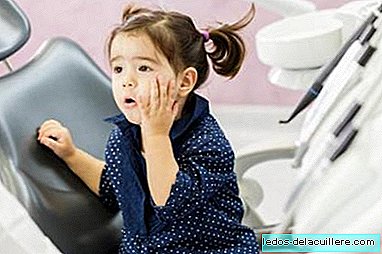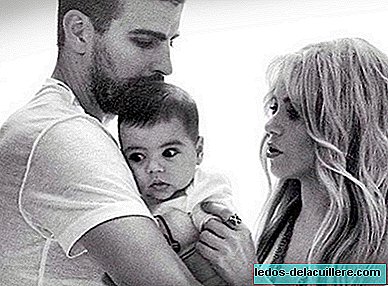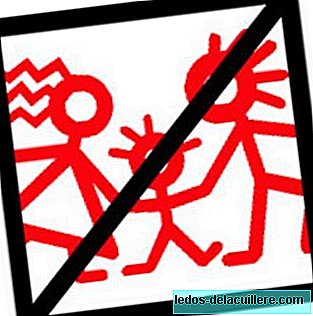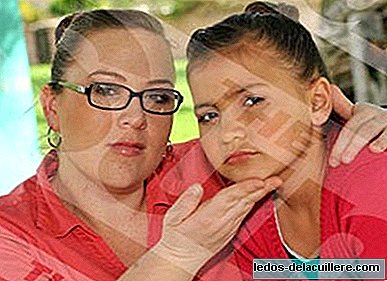Children play with friends, jump, run, chat, enjoy, even argue, but ... What happens when that friend is imaginary? Is it normal for our son to have one? How can we handle this situation?
It is understood by imaginary friend to a friend that the child creates, with whom he interacts often and speaks to third parties. Some authors distinguish between imaginary friends and personified objects (such as a stuffed animal or a doll to which the child gives "life"), since the characteristics of the children who choose one or the other seem to differ in some aspects.
Imaginary friends may appear between 3 and 7 years old, although there are cases of preteens (and even teenagers) who maintain in a certain way (with different characteristics than the smallest) a “non-real” figure with which they have some kind of interaction. Its presence is neither negative nor indicative of pathology. (except specific cases with specific characteristics) so we should not worry: there are many children with imaginary friends, to give you an idea, a study conducted with American children determined that almost 30% of children between 3 and 4 years It has one (and this only in this age range).
Usually these imaginary friends they disappear the same way they appeared, without having to do anything exceptional on the part of the daddies.
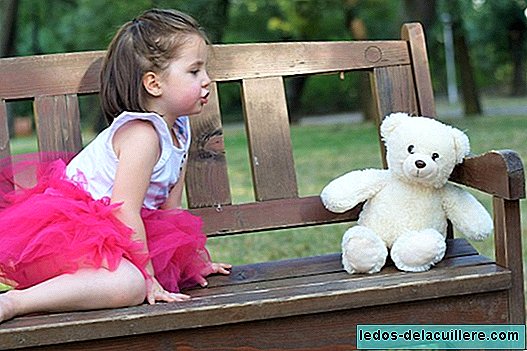
Do you always imagine another child?
The shape, age, features and even the imaginary friend's species can vary greatly from one child to another. In a study conducted by Marjorie Taylor, a professor of psychology at the University of Oregon, in 2003 (with an American population), 27% of the children studied imagined Another child, 19% to an animal, 17% to a child with magical characteristics or powers, 12% to a person older than them, and among the rest, Babies, ghosts, angels or superheroes they were the ways in which they visualized their imaginary friend.
According to this author (and other specialists from the University of Oregon) in her book "Imaginary Companions and the Children Who Create Them" imaginary friends do not always behave "well", sometimes they can perform unwanted behaviors by the child as not go when called, throw food over them, or mess up the room. So yes, imaginary friends can be quite naughty.
They are not hallucinations
Imaginary friends, although they do not occur in all children, are part of the normal development of children, the evolution of their imagination and fantasy, it is not a pathological process.
While it is true that the imaginary friends and hallucinations from a clinical point of view they have common features, they are not the same, nor do they have the same implications at all, there is a fundamental and key feature that differentiates them: imaginary friends are children's creations, under their control, and are functional figures, that is, the child uses them for a purpose. On the contrary, hallucinations are not voluntary or controlled, the subject does not handle at his mercy the hallucinatory content (which is invasive). On the other hand, the presence of these imaginary figures does not imply a loss of contact with reality.

Why do imaginary friends appear?
The idea that imaginary friends appear as compensation for emotional deficiencies is due to the fact that the first studies carried out on the subject, back in the 1930s, had exclusively orphaned children living in orphanages (of the time, imagine the panorama) . However, in later studies, which already included children living in functional homes, they discovered that there were also cases of friends of this type.
Although it may seem somewhat logical, these imaginary figures they do not occur especially in shy children or with difficulty in relating, it is rather the opposite: it is usually children who are not shy and easily laugh and enjoy in the presence of others, as Taylor indicates in his study.
For years it has been thought that the appearance of imaginary friends is partly due to the fact that children are at a stage where they do not yet distinguish the reality of fantasy, however M. Taylor and C.M. Mottweiler (among others) in recent studies show that children aged 3 or 4 are able to perform this differentiation. According to research conducted by Paul L. Harris (as recorded in his book "The work of imagination"), the appearance of these friends, far from being negative, help children in their development process to understand the emotions and minds of others, being, in a way, a kind of role play.
Imaginary friends do not arise “because…”, but “for…”, that is, although we are not talking about exceptional or complicated situations, it is true that these friends fulfill some functions for children: development of your fantasy and imagination, interactions, game, interpretation of the world, explanation of facts that you do not understand, and even being able to participate in adult conversations (you may not feel experts to participate, but your friend "Pepito" may ) ... Hence it is important, as I will emphasize later, that we, the parents, let's participate and meet that figure that accompanies our son, because it will give us information about your needs, experiences, confrontations, etc.
Can they be an alarm signal?
The presence of an imaginary friend should not lead us to think about difficulties or pathologies, however there are times when they do appear as a response and stressful or traumatic events for children. They can occur in cases where children do not have the necessary emotional tools (due to evolutionary or personal factors) to deal with a complicated situation. When to consult a professional?
- When the presence of that imaginary friend is showing a avoidance by the child or a method of escape from reality: This can happen in occasions and contexts that the child lives as excessively stressful and that he is not yet able to handle, such as a very complicated separation from the parents, the death of a close relative, etc.
- When this "friendship" is having a negative impact on your desire to interact with other children, that is, if withdrawal or social isolation occurs.
- When his behavior becomes aggressive Following the appearance of the imaginary friend.

What to do if my child has an imaginary friend?
Except for these exceptional cases that I mentioned earlier, and as I have pointed out several times, the presence of invisible friends should not worry us. If our son has an imaginary friend The main thing is to normalize the situation:
- Ask him about his friend. Whether it is real or not, the truth is that it is part of our child's day-to-day life, so we better know him and know what specific characteristics he has (what he does, what he says ...): this will help us to better understand our child.
- The rules have to be met, although it was the imaginary friend who skipped them. It may happen that the child tells us that the bedroom is messy because his friend has thrown all the toys on the floor, or that food hanging from the wall has been thrown by "the other", but in any case, someone has to Pick up the things. Let us explain to our little one who has been who has been to pick up, and give him space to do it (obviously it is going to touch him, but it is not necessary to show it either).
- Although it may seem weird, integrate your friend into your life normally. For the little one his friend is there, he has a voice and vote, and he can even demand his own physical space (in the car, at the table ...): nothing happens to get a little into the rag in his story, so our son will not feel A rejection on our part.
- If we do not agree with “participate in a lie”: There are families for whom this fantasy is fun and innocuous (like Santa Claus, the Magi or the Little Mouse Perez), but for others, treating an imaginary being as real can be a problem (feeling that they are “ lying to the little one ”or cheating on him). Each one must be consistent with their educational guidelines, which yes It is important, in any case, always, always, is not to ridicule the child and not convey that it is something negative, because that could make you feel bad.
Photos: Pexels.com
In Babies and more: Sex education for children 3 to 5 years: how to talk to children




